製品
Last month we announced the installation of our next generation dilution refrigerator, Proteox at the University of Glasgow. As our second blog post, we wanted to interview Professor Martin Weides FInstP who holds a Chair in Quantum Technologies at the James Watt School of Engineering, University of Glasgow (UK) as well as a couple of Postdoctoral Research Associates, Paul Baity and Sergey Danilin, to find out more about the work that they’re doing.
Much of our modern life is unthinkable without software operating on computers, tablets, smartphones, and embedded devices. An ever-increasing amount of energy is required for computing, impacting the global drive to meet a green, low-carbon economy. Moore’s law, which predicted the rate of doubling processing power year-on-year - is slowing down as the physical circuit dimensions approach their limits. It is no longer possible to routinely shrink the size of transistors which had underpinned the drive to faster speeds and lower power consumption.
Quantum computing, in which information is processed using the properties of microscopic particles or nano-electronic circuits, has seen step-changes in the rate of development over the past few years. This has come alongside major investments from large companies such as Google and IBM and substantial funding from national programmes such as the UK’s NQT programme. The leading hardware architecture is based on superconducting systems and has demonstrated the potential for complex calculations with 50-100 quantum bits. Even at thismodest size, a quantum computer can perform certain types of calculations well beyond the capability of large supercomputers. Larger quantum computers will gradually increase the range of practical applications, starting with quantum chemistry, logistics, or finance.
The University of Glasgow develops superconducting circuits, which form the basis of quantum computers being pursued also by the big tech companies. Our team is among the largest in the UK and has unique access to the leading nanofabrication facility, the James Watt Nanofabrication
Centre (JWNC) and its established commercial unit, Kelvin Nanotechnology (KNT) for commercial provision. Having started about two years ago, our work is nowadays well integrated into national and international programmes with contributions in materials, nanofabrication and cryogenic hardware for quantum computing.
There are several links! Oxford Instruments NanoScience is the leading manufacturer of cryogenic systems, which are required for the operation and testing of superconducting quantum structures. In our group, for example, we have two dilution refrigerators from Oxford Instruments, including the latest ‘Proteox’ model, which operate on a basis of cycling 4He/3He gas to cool down to 10 mK (that is -273.14 °C)! These systems are ‘dry,’ meaning that they operate without the need for a constant supply of liquid helium as older models of cryostats used to require, and as a result, are much simpler to operate. The systems are also fully automated to allow ease of use. Having such easy-to-operate and low-maintenance systems allows us to focus more attention on our research and speeds up our development processes. Indeed, these cryogenic refrigerators are the working horses in the superconducting-based quantum computation, and it is impossible to imagine the field without these essential systems.
In 2020, Oxford Instruments and Glasgow were awarded with an Innovate UK grant to industrialise the test of superconducting quantum devices. This funding is vital to addressing today’s new pressing challenges to increase the technological readiness level of superconducting quantum circuits, through novel nanofabrication techniques and cryogenic measurement service provision to the global quantum community. A third partner,KNT, will provide nanofabrication foundry services to the partners and commercial markets.
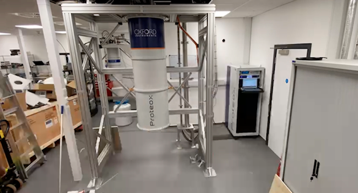
Volume, flexibility, cooling power! Student-friendly!! The large diameter of the mixing chamber plate provides a huge volume available for cryogenic devices required for our experiments. The refrigerator has plenty of cooling power to run multiple measurement setups simultaneously. In our opinion, the major benefit of the refrigerator is its interchangeable measurement insert and the convenience of its use.
With high-density wiring and cooling power, it is possible to run an increased number of coaxial cables from room temperature down to the mixing chamber plate. The possibility of removing the insert from the refrigerator makes it easier to modify the wiring and add new cryogenic components. This is more convenient than in standard systems, where the density of cables and devices can restrict access to wiring connections that are blocked by the other components. This restriction often requires full or partial disassembly in order to modify measurement setups. Therefore, we expect a large increase in convenience for the Proteox, making it ideal for an academic environment like ours with lots of students!
Our research focuses on materials and process development for quantum circuits. The experiments require the implementation of both dc and microwave wiring systems and techniques, and the extra cooling power provided by the Proteox will allow for additional wiring lines and simultaneous measurement of multiple samples. The wires for the dc measurements are usually made of relatively low thermal conductivity metals (e.g., BeCu) for interconnects between the room temperature and the 4K stage and superconducting alloys (e.g., Nb-Ti) between the 4K and the 10mK stage. Wires are grouped into ribbon tapes and thermalised at each temperature level to gradually absorb the heat which flows toward the coldest parts of the refrigerator. For microwave measurements, thin semi-rigid coaxial cables with low thermal conductivity are used. The cable wiring is interrupted at various temperature stages to include attenuators, which reduce noise and help thermally sync the microwave lines. Microwave filters, cryogenic circulators, HEMT amplifiers, and microwave switches, which can be mounted at various temperature stages, are also typically used in our experimental set-ups.
The operation of quantum computers requires a high degree of temperature control, which is achieved by cooling the circuits down to near absolute zero. The Proteox can cool our quantum circuits down to 10mK, allowing for qubit operation and testing. The other crucial aspect is a continuous operation. With the growing complexity of quantum circuits being measured, it takes longer and longer to characterise, calibrate, and tune the operation of the circuit. It would be completely impossible to run similar experiments in a refrigerator with a limited cold time that requires a recharge or periodic partial warm-up.
For the refrigerators of the Proteox class, the time of operation is only limited in principle by service intervals for the system’s machinery. Additionally, due to the exchangeable measurement insert and large cooling power, it provides a flexible and reliable platform for low-temperature measurements with an increased capacity for wiring and measurement set-ups.
They say that Moore’s law is ‘retiring,’ and this means that the giants of CMOS technology are challenged more and more to provide the growth of classical computational power at the same pace as it was before. We think these companies (Intel, IBM, Google) have and will continue to be the leaders in the development of quantum computation, but we are seeing others join in with different technologies and strategies. Another sector that will be interested in quantum computing are the chemistry and pharmacological industries, which can make use of quantum computers to dramatically reduce the time it takes to find new medical compounds to treat diseases currently thought to be incurable. This has more in common with quantum simulations – a quantum approach to tackling hard computational problems. Concerning this, we recently asked ourselves:
“Could a fully developed quantum computer have helped humankind overcome the Covid-19 pandemic quicker and with not so high a death toll? Would it have helped to get the vaccine even sooner?”
Quantum technologies are recognised in the UK as the technologies of the future. Their development is of national importance with the UKNQT programme having been established for the sole purpose of quantum technology development. Over the 5-year-long first phase of the programme, the UK invested 120million pounds in four Quantum Technology Hubs, and the extended investments continue to feed the development of quantum technologies concentrated around the Hubs. A new addition to the quantum scene is the National Quantum Computing Centre (NQCC) to drive quantum computing to higher technological readiness levels. Given this, we think the UK is on track to be a major contributor, or even global pioneer, in the field of quantum computation and engineering. Indeed, its first large-scale quantum computer is expected to be available for use within the next few years.
We think quantum computing is still in its infancy. The problem of building a general-use quantum computer is extremely challenging, and there is a long way to go for this goal. The fundamental physical principles of quantum computation and the operation of the elementary elements involved are already studied very well by academic research groups with many seminal and conceptual results achieved over the last twenty years.
Nowadays the quantum computation community faces engineering problems in the structure of packaging/architecture, the interconnectivity of elements, and the control and readout of scaled. As a result, the future brings more engineering and programming challenges that require wider collaboration and participation of industrial parties. We believe that active collaboration between academic research and industry is beneficial for both.
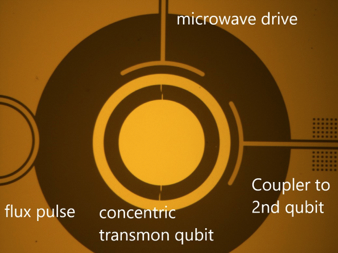
Here, the knowledge developed and accumulated over the last decades in academia can be merged with the reach, capabilities, and variety of technical solutions offered by industrial partners will facilitate the growth and development of quantum technologies.
In particular quantum foundries like our JWNC play a major role in developing new technologies and transferring them into real-life applications. At the same time, there is still a lot of room at the bottom to explore, for new concepts and solutions, to play with and explore quantum physics. It is super-cool science to manipulate the quantum properties of human-made objects (such as our concentric transmon circuits) visible with the naked eye! BTW, we’re always looking for talent (undergraduate, PhD student or postdoc), if you’re interested in joining us, drop a note! Here’s the link: https://www.gla.ac.uk/schools/...
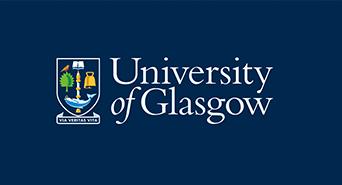
Visit their website : https://www.gla.ac.uk/
Follow them on LinkedIn : https://www.linkedin.com/schoo...
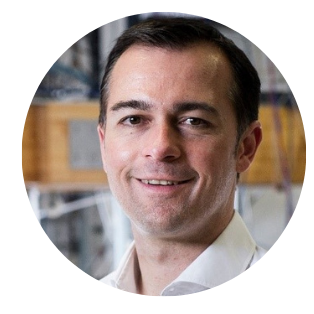
Professor Martin Weides
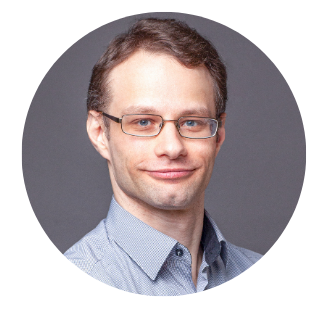
Dr. Sergey Danilin
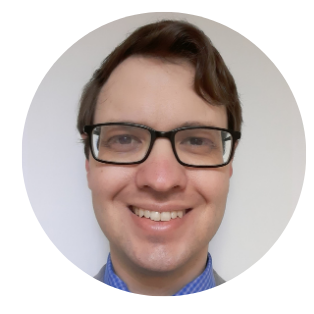
Dr. Paul Baity
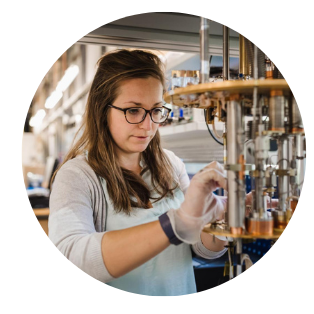
Harriet van der Vliet
Interviewer